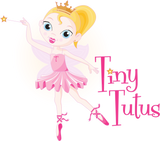What to Expect at Your Child’s First Ballet Class (And Why It’s Okay if They Don’t Join In Right Away)
What to Expect at Your Child’s First Ballet Class (And Why It’s Okay if They Don’t Join In Right Away)
At your child’s first ballet class, expect excitement, nerves, and sometimes hesitation. It’s completely normal for toddlers to cling, watch from the side, or need a few weeks to warm up. At Tiny Tutus, we honour these early experiences as an essential part of the learning journey.
It Doesn’t Have to Look Perfect - It Just Has to Begin
You’ve signed up. You’ve bought the ballet slippers. You’ve carved time out of your already overwhelming week to bring your little one to her very first class.
And then… she won’t let go of your leg.
Or she watches from the side and doesn’t join in.
Or she runs in circles, completely ignoring the teacher.
And suddenly, you feel a flush of anxiety. Is this normal? Should we even be here? Am I doing this wrong?
You’re not doing it wrong.
You’re doing exactly what your child needs - showing up, gently, and giving them space to begin.
What a First Ballet Class Might Actually Look Like
Here’s the truth: most parents imagine their child’s first ballet class like a scene from a movie - twirling, smiling, jumping right in.
But in reality, many first classes look more like this:
- A ballerina standing still, silently watching
- A child hiding behind Mum’s chair for the first 10 minutes
- Tears or frustration because the space is unfamiliar
- A parent second-guessing themselves
And all of that is completely developmentally appropriate.
At Tiny Tutus, we don’t expect children to participate straight away.
We give them space to observe, acclimate, and enter on their own timeline.
Watching Is Participating
Just because your child isn’t joining in physically doesn’t mean they’re not learning. In fact, observation is one of the most powerful learning tools in early childhood.
When your child stands and watches, they’re:
- Taking in the structure of the class
- Learning the music cues
- Decoding the teacher’s movements
- Deciding when it feels safe to try
This is emotional safety in action. And it’s the foundation of real confidence.
You’ll Be Right There (Literally)
At Tiny Tutus, parents don’t wait in the lobby or press their faces against a one-way mirror.
You’ll be seated in the studio, in a designated viewing area, fully present, fully welcome.
Your child can glance back and see you.
You can support without hovering.
And together, you share the moment, even if that moment is quiet observation.
This is one of the reasons we were the first Australian dance school to offer completely open classes, because no child learns best when separated from the person they trust most.
What’s Going on in Their Little Brain
At 2, 3, or even 5 years old, your child’s brain is still figuring out:
- How to manage group settings
- How to take in lots of new sensory input
- How to handle pressure or expectation
- How to take social risks in front of peers
So if they:
- Watch instead of move
- Cling to you
- Run around to release nervous energy
- Cry unexpectedly
That’s not failure. That’s learning.
Let’s Take the Pressure Off - For Both of You
So often, we see parents more anxious than their child.
You’re managing mum guilt, exhaustion, and an invisible sense of “I hope no one thinks I’m failing.”
But what if we took that pressure off?
Your child doesn’t have to be a star ballerina on week one.
You don’t have to prove anything to the room.
All you have to do is show up with kindness and stay a while.
Your First Class Is Just That - The First Step
The first class isn’t about flawless execution.
It’s about being brave enough to try.
At Tiny Tutus, we welcome ballerinas from 16 months of age, and we expect:
- Hesitation
- Shyness
- Tears
- Giggles
- And everything in between
We’ve built a space where all of that is allowed. Encouraged, even.
Because we’re not just teaching dance. We’re teaching children how to belong.
We'd love to welcome you to Tiny Tutus! Book a Trial Class today or Learn More About Our Program here
